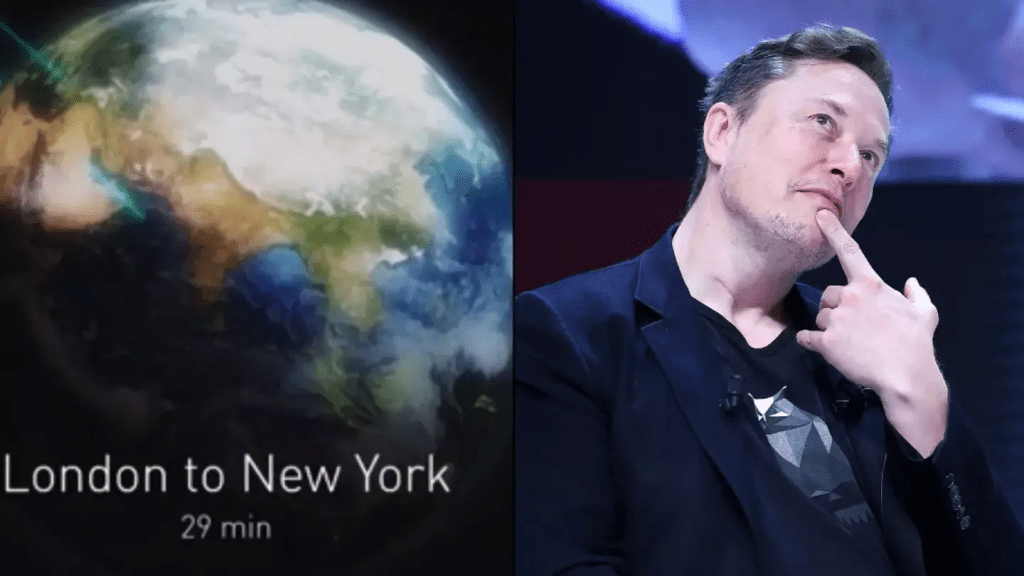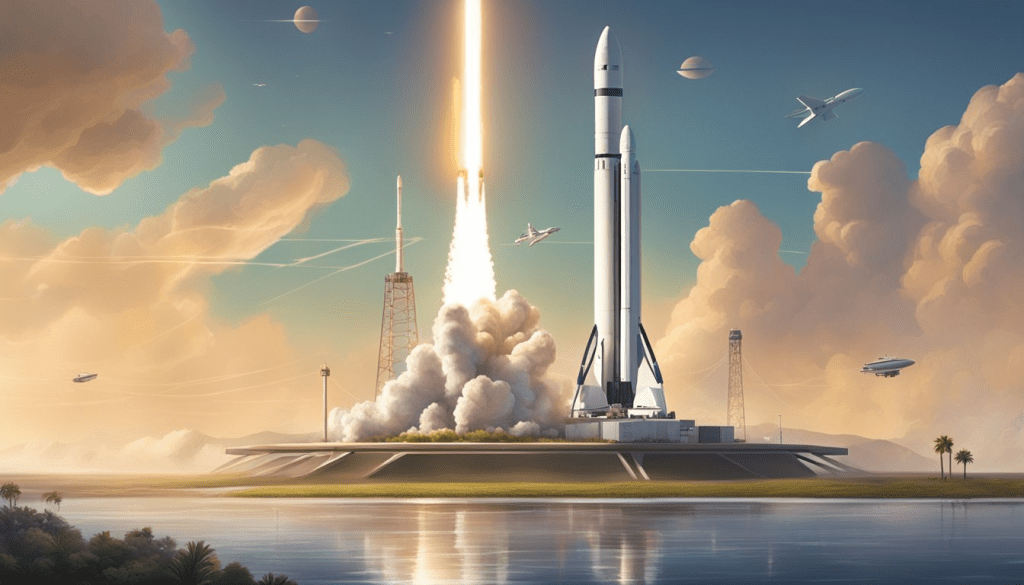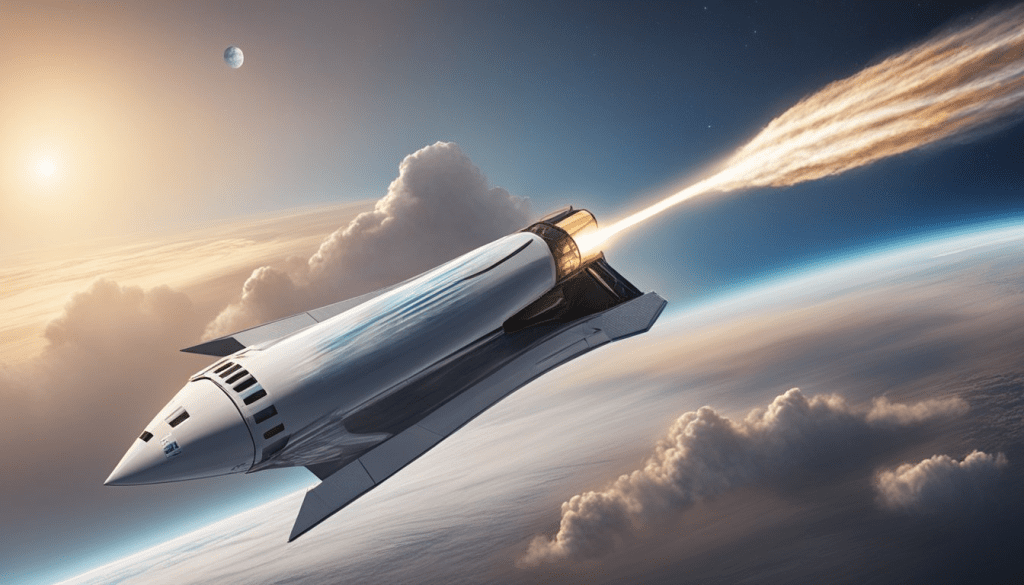Imagine boarding a spacecraft and arriving in New York from London in less than half an hour. Elon Musk, the billionaire behind SpaceX, envisions a future where such rapid travel across the globe becomes a reality. By leveraging the incredible capabilities of SpaceX’s Starship, Musk aims to revolutionize the way we think about long-distance travel. This ambitious plan could redefine global mobility, turning intercontinental flights into ultra-fast commutes. Here’s a look at how Musk’s vision might soon transform the world of travel.
The Revolutionary Concept: SpaceX’s Starship for Earth-to-Earth Travel

SpaceX’s Starship, the world’s most powerful rocket, is primarily designed for interplanetary travel, with missions to Mars on the horizon. However, Musk has an additional plan for the spacecraft: rapid, Earth-to-Earth travel. By utilizing Starship’s remarkable speed and capacity, SpaceX proposes to turn a journey like London to New York into a mere 30-minute trip. According to Musk, this isn’t just a dream; he claims it’s entirely within reach.
How It Works: Boarding a Rocket Instead of a Plane
In Musk’s vision, passengers would first board a boat to travel to an offshore launch platform. Starship, mounted on the platform, would then blast off, reaching speeds previously unimaginable for conventional air travel. With its ability to fly at over 27,000 km/h (Mach 25), Starship could complete most long-haul journeys in under an hour. Once in the atmosphere, the craft would follow a parabolic trajectory, entering space briefly before descending toward its destination, creating a fast, direct route.
Mind-Boggling Speeds: Starship vs. Traditional Airliners
To grasp the revolutionary potential of Starship, consider this: the average commercial airliner travels at around 1,000 km/h, whereas Starship’s estimated speed exceeds 27,000 km/h. This leap in velocity means that distances which currently take hours to cross by plane could be reduced to minutes. For example, flying from London to New York on a commercial flight typically takes around seven hours. Starship would slash this down to 29 minutes.
Projected Flight Times for Major Global Routes
SpaceX has shared projected flight times for some of the world’s busiest international routes:
- London to New York: 29 minutes
- New York to Paris: 30 minutes
- Tokyo to Delhi: 30 minutes
- Sydney to Singapore: 31 minutes
- LA to London: 32 minutes
- London to Hong Kong: 34 minutes
- New York to Sydney: 49 minutes
These times showcase a future where global travel could be as fast as a local commute, making distant destinations far more accessible.
Safety and Comfort: A New Approach to In-Flight Experience
While the concept of zooming across continents in minutes is exciting, it does raise questions about passenger comfort and safety. Musk has mentioned that moving around the cabin during these high-speed journeys would be “unwise.” Passengers would likely be required to remain strapped into seats similar to those on roller coasters. Musk even likened the experience to Disney’s Space Mountain, suggesting that while exhilarating, it would require restraint mechanisms to ensure safety.

No Frills: Musk’s Vision for Practical, Rapid Travel
Musk has hinted that the Starship flights will be designed with efficiency and speed in mind, rather than luxury. He envisions an aircraft with minimal amenities—no food service, bathrooms, or luxury seating. In a tweet, he suggested that all seating would resemble coach class, with a focus on getting passengers to their destination as swiftly as possible. This no-frills approach emphasizes function over comfort, making the concept a kind of “rocket bus” for high-speed travel.
Overcoming Regulatory Hurdles and Gaining Approval
While the technology might be feasible, Musk still faces considerable regulatory hurdles before Earth-to-Earth travel on Starship becomes a reality. To gain approval for such flights, SpaceX would need to work closely with aviation authorities, such as the Federal Aviation Administration (FAA), to address safety, noise, and environmental concerns. However, optimism remains high, as Musk has hinted that regulatory bodies could be open to approving the concept, potentially clearing the way for the development of launch platforms.
Environmental Considerations: A New Kind of Eco-Impact
High-speed rocket travel raises valid concerns about environmental impact, particularly when it comes to emissions and noise pollution. Conventional air travel already contributes significantly to carbon emissions, and rocket launches could amplify this effect if not carefully managed. Musk, who is a proponent of sustainable technology, has suggested that reusable rockets like Starship could reduce overall emissions compared to traditional jet engines over time, though the specifics remain uncertain.

The Potential Impact on Global Connectivity
If Musk’s vision becomes a reality, the impact on global connectivity would be profound. The ability to travel anywhere on Earth in under an hour could foster stronger international ties, make distant business trips feasible, and change the way we view international travel altogether. Imagine scheduling a meeting in Tokyo in the morning and being back in New York by afternoon. This kind of connectivity would open new opportunities for commerce, tourism, and cultural exchange, essentially shrinking the globe.
The Next Steps for Musk and SpaceX
As ambitious as this plan is, SpaceX is still in the early stages of development for Starship Earth-to-Earth travel. Test flights and prototype demonstrations will be crucial to convincing both regulators and the public of Starship’s viability for rapid global transport. Musk has also suggested that additional infrastructure, such as offshore launch platforms, will be necessary to minimize disruption and ensure safety for densely populated areas.
While a full rollout might take years, Musk’s track record of turning ambitious goals into reality suggests that his vision may not be as far-fetched as it seems.
Conclusion: A Bold Future for Intercontinental Travel
Elon Musk’s proposal to use SpaceX’s Starship for Earth-to-Earth travel challenges the limits of what’s possible in transportation. His vision could redefine travel, turning hours-long flights into quick half-hour journeys across continents. Though technical, regulatory, and environmental challenges lie ahead, the concept has the potential to transform the world’s economy and culture, making far-off destinations feel just around the corner.
As Musk pushes forward with his daring plans, the world watches with anticipation. Could we one day board a rocket in London and land in New York in under 30 minutes? With SpaceX, the sky may no longer be the limit—soon, it might just be the launch point.